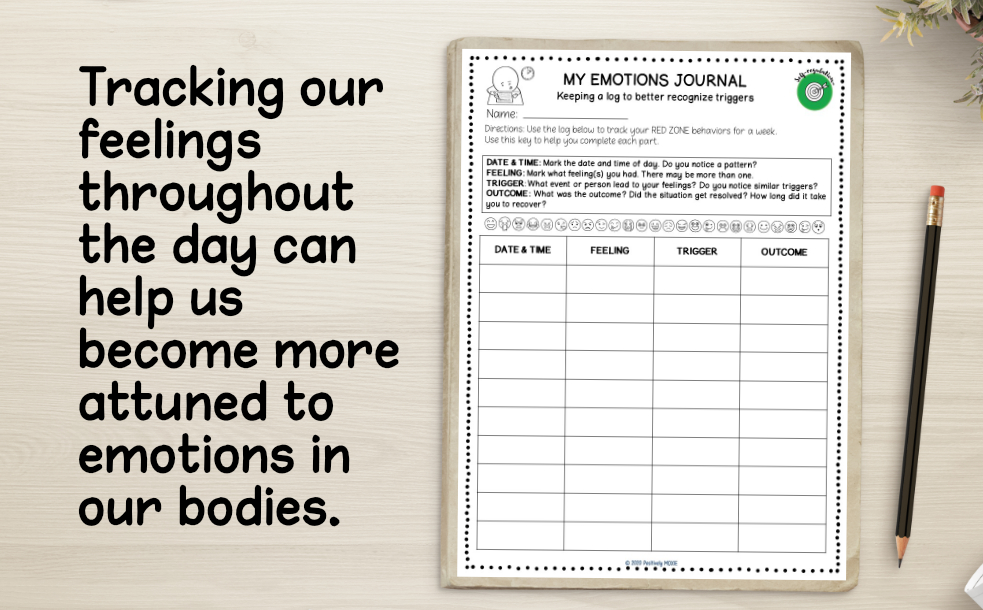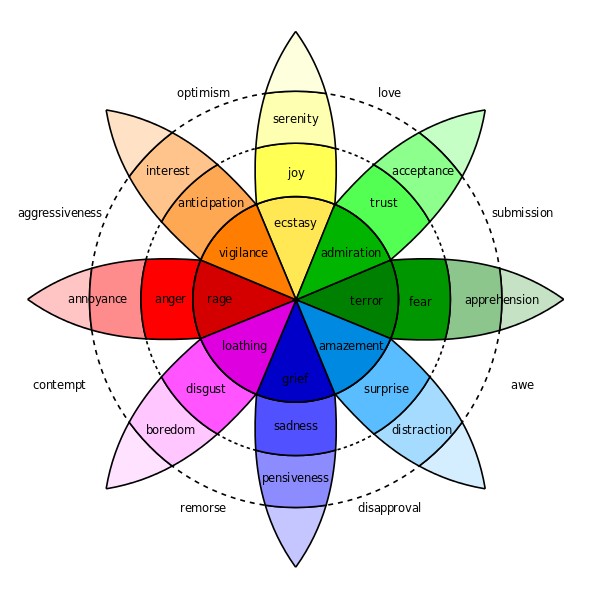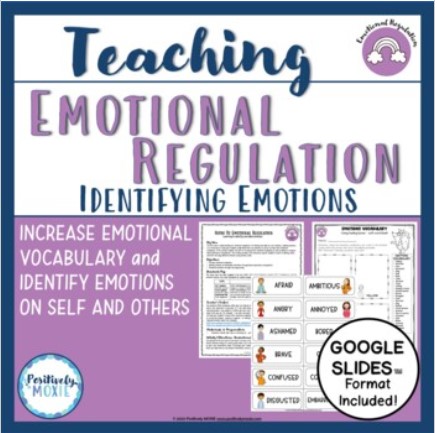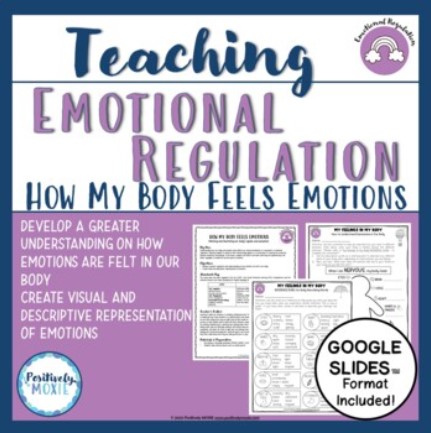
Learning to understand and navigate emotions is essential to cultivating happiness and resilience. Accepting our emotions as they flow through our bodies and having strategies to respond to them is empowering. A greater understanding of our emotions allows us to recognize where we can influence a situation and then let go of what is outside our control. With greater emotional regulation, we may be present at the moment, manage emotions as they are perceived, and gain greater control over our own feelings and actions.
1. Identify Universal Core Emotions
The first step in understanding our emotions is to identify and label our emotions. Labeling emotions is a critical piece to help yourself and your students to understand their own emotions and to increase their emotional vocabulary. Although there are differing views, most emotion experts agree that there are at least five core emotions. One of the models of core emotions is the Plutchik Model. created by psychologist Robert Plutchik shows eight basic emotions: joy, trust, fear, surprise, sadness, anticipation, anger, and disgust.
Within the core emotions are a plethora of different labels as listed here in Elena Aguilar’s book, Onward. For example, anger can range from annoyance to rage and everything in between. It is important for us to be able to accurately identify our emotions to gain a greater sense of control and to communicate and connect with others. Our lesson, Identifying Emotions, can also help children learn to connect with what is going on inside their minds and bodies.
2. Get to know your Emotion Cycle
As you probably know, most emotion cycles have the same basic pattern. There is usually a triggering event, we make an interpretation, and then we respond. If we want to change our reaction in the emotion cycle, we must stop and analyze our interpretation (thoughts) about the event. Try reflecting after your next emotionally charged event:
- What event triggered this emotional cycle?
- What was my interpretation of the event at the time?
- What physical responses did I notice in my body?
- What did I do? What did you actually do and say? Be specific.
- What is the consequence of what happened & how you respond?

3. Do a Body Scan
Understanding how our body and emotional state affect our mood and behavior is a key factor in emotional regulation. Attending to our internal body signals, and teaching children how to pay attention to their body signals, is a crucial piece in creating the connection between sensations and feelings.
The body scan techniques allow you to experience your body as it is – without judgment. Through a body scan, you may notice tension in your body and be able to release that tension. You may be sitting or lying down. A great resource for learning how to do a body scan and for teaching students about it is Learning to Breathe by Patricia Broderick, a research-based mindfulness curriculum for adolescents that cultivates emotional regulation through guided mindfulness exercises. The book integrates certain themes of mindfulness-based stress reduction (MBSR), developed by Jon Kabat-Zinn, into a brief, more accessible format for students.
4. Practice Breathe Work
Breathing is one of the most effective ways to calm your mind and body. It is also the simplest because it is always accessible to you. Although there are different techniques for breathing, the basic ratio of 1:1 works most of the time. When we are wanting to calm our bodies, it may be helpful to lengthen the exhale in ratio to the inhale. In this video, Dr. Weil demonstrates 4-7-8 breathing technique, which is very effective in relaxing the nervous system.
5. Try “RAIN” to Process Emotions
RAIN is the acronym for a simple 4-step process to deal with emotions. The acronym RAIN was coined by Michele McDonald in 2005 and is based on mindfulness practices.
The acronym RAIN, first coined about 20 years ago by Michele McDonald, is an easy-to-remember tool for practicing mindfulness. It has four steps:
- Recognize the thoughts, feelings, and behaviors affecting you. (Name your emotions)
- Allow the experience to be there with self-judgment. Our feelings are trying to tell us something – allow space for that to happen.
- Investigate with kindness & curiosity.
- What’s going on in my body?
- What story am I telling myself?
- What does this feeling want from me?
- Natural awareness comes from not identifying with the experience.
6. Reframe Your Thoughts

What you say to yourself matters. Distorted or rigid thinking can reinforce negative thinking and uncomfortable emotions. Heightening our awareness of which kinds of thinking errors we fall into takes time and practice.
7. Try Grounding Techniques
Grounding includes processes to deepen your felt sense connection to the earth, gravity, your body, your sense of weight, location, place, and 5 senses. By engaging the five senses, grounding exercises can help you quickly calm and relax. Try some grounding exercises next time you experience a surge of uncomfortable feelings such as fear or anger to come back into the present moment. This felt sense of contact in the present moment provides gravitational security and a sense of safety and control.

• Find a comfortable position. You can ground by sitting, standing, lying down, or walking: how your back is making contact with the chair, sofa, floor, wall, bed, earth, etc.…. Notice your feet making contact with the ground
• Notice the sensations that are more pleasant to you or neutral within your body. If you become aware of uncomfortable sensations, bring attention to places that feel neutral or better.
• As you bring your attention to the contact of your body with the chair/floor/wall/bed etc, notice your breathing, heart rate, muscle relaxation, etc.
• As you get ready to end, slowly scan your body and bring your attention to all sensations.





